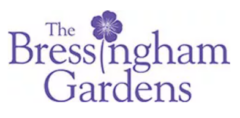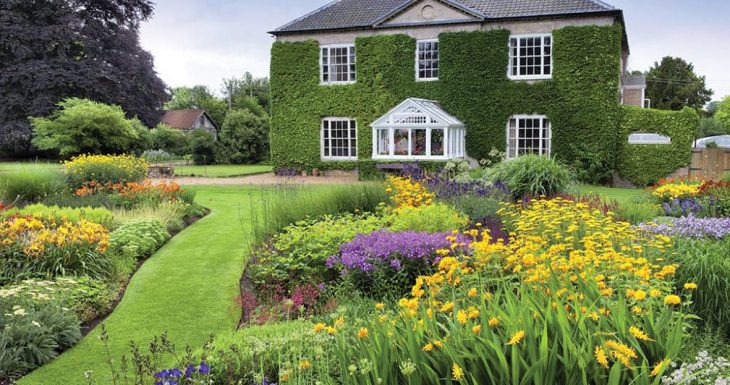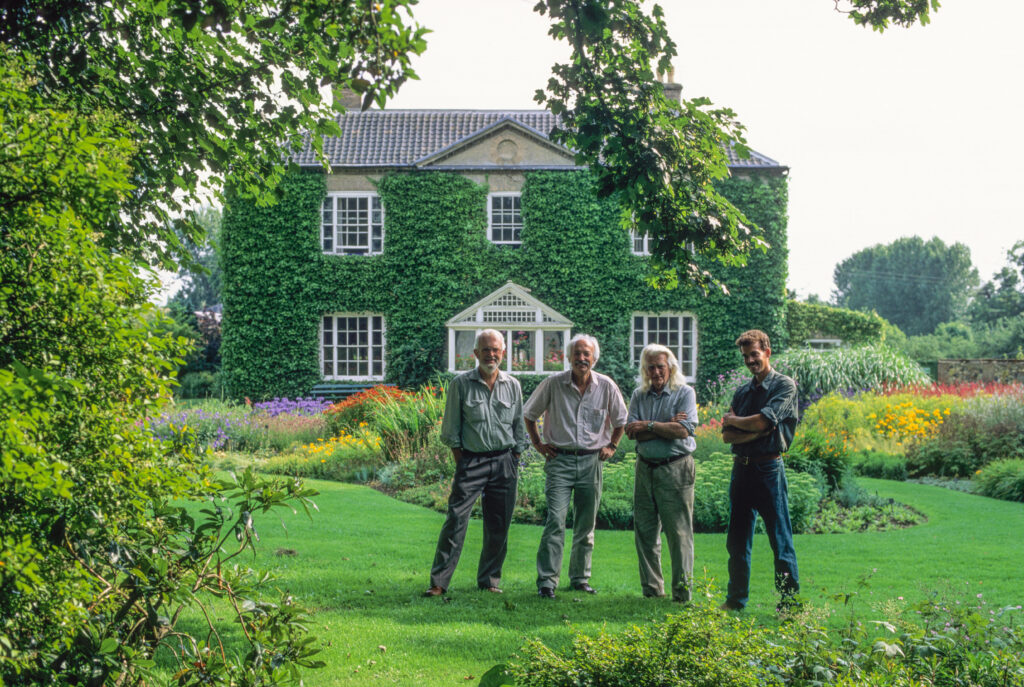
17 acres of award-nominated gardens, and a Steam Museum, surrounding a handsome eighteenth-century manor house and barn.
Bressingham Hall, Low Road, Bressingham, Norfolk, IP22 2AA

History of Bressingham Hall
We believe that the present Bressingham Hall, which is Grade II listed, was built in the second decade of the 19th century – but to a design of around 1760. Described as a ‘mansion’ of Georgian design, the Hall appears to have been built on the site of an earlier farmhouse.
The estate surrounding the farm was leased in the 18th century by the Martin family and then owned by them from about 1802. Robert Martin, the grandson of Thomas Martin, a well-known antiquarian of nearby Palgrave, is thought to be the man who built the present Hall.
Robert Martin built up the estate to some 200 acres of land, causing much of the fertile fenland to the south to be drained to make it possible to grow wheat and other crops.
In 1817 Robert petitioned Parliament to try to make other farmers in the Waveney valley drain their land in a similar way.
Robert Martin was clearly a notable personage in and around Bressingham: you can see an impressive memorial to him and his family embedded in the centre aisle of Bressingham Church, 200 yards to the west of the Hall.
It would, however, seem that the effort of draining the land, building the Hall and laying out gardens to the west stretched Robert’s finances. He died in 1831 without leaving a will and within a short while his widow, Susannah, sold the house and farm (for £5,800) to a Mr Chenery of Eye, a market town not far away in Suffolk.
The Hall was then let to a succession of tenants before being bought in 1877 by Arthur Pontifex who sold it in his turn in 1907. Two more owners intervened before Alan Bloom bought it in 1946. It remains in the Bloom family who celebrate 70 years of ownership this year – 2016.
The Hall is built to a traditional Georgian design, with an impressively elegant entrance hall and with double front doors surmounted by a notable fanlight. On either side are two large high ceilinged reception rooms – the drawing room on the right and the dining room on the left. Each has the original Georgian plaster cornices. In the hall is the original cantilevered staircase leading gracefully up to a first and mezzanine front landing.
History of the Gardens
The founder of Blooms Nurseries, Alan Bloom (1906- 2005), began developing a garden in front of Bressingham Hall in 1953, devoted to a new concept of using perennials, the nursery’s speciality, in Island Beds. Six acres and nearly 5000 different species and cultivars were taken in and planted by 1962, when the gardens were first opened on a regular basis to the public.

l-r: Robert Bloom, Adrian Bloom, and founder Alan Bloom, with Adrian’s son Jason, in 1995
Returning from four years abroad (including two years in the U.S.A.) in 1962, Adrian Bloom began developing more gardens, starting his own, Foggy Bottom Garden in 1967 devoted to conifers, heathers, trees and shrubs.
In 2000, additional gardens were added by Adrian, linking them up to create a more diverse attraction to visitors, and joining the gardens together to create a Foggy Bottom Trail, leading from the entrance near the Steam Museum to the furthest and lowest end of Foggy Bottom. Today, although changes are still constant, the newer gardens are maturing; new planting designs and plants are being tried. Heritage and novelty exist together with the number of distinct varieties now in the region of 8000.
Bressingham Hall, near the entrance to the gardens, plays a historic role and has an iconic presence. Alan Bloom’s home for 50 years and that of the Bloom family has now been fully re furbished and is available for use as holiday lets and for wedding and other group stays.
